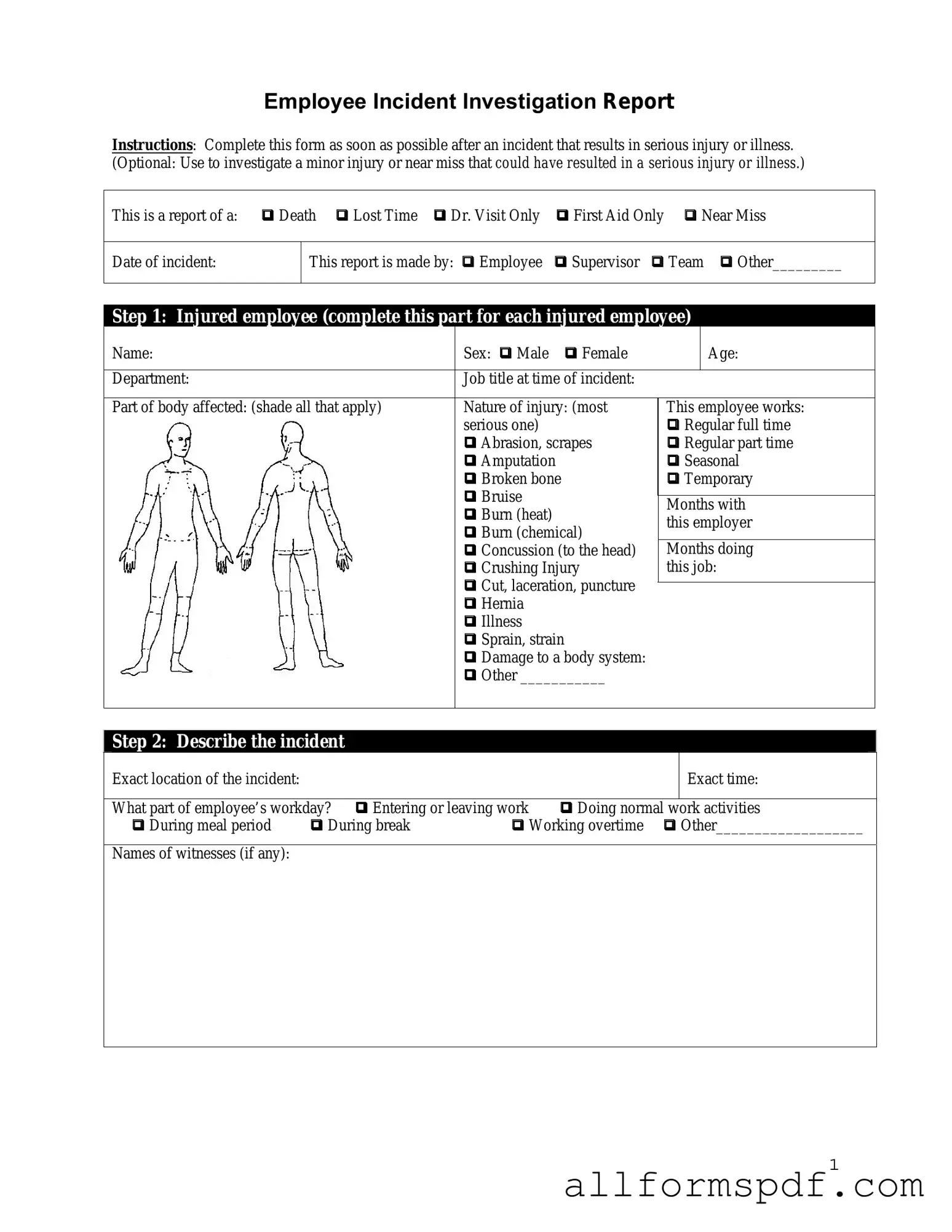Filling out an Employee Accident Report form is a crucial step in documenting workplace incidents. However, many individuals make common mistakes that can lead to complications down the line. One frequent error is failing to provide complete information about the incident. This includes neglecting to include the exact time and location of the accident, which can hinder investigations and claims processing.
Another mistake often seen is the omission of witness statements. Witnesses can provide valuable insights into the circumstances surrounding the accident. Without their accounts, the report may lack important context, making it difficult for employers to assess the situation accurately.
People sometimes rush through the form, leading to incomplete or unclear descriptions of the incident. A vague explanation can create confusion and may not fully convey the severity of the accident. It is essential to take the time to detail what happened, including any contributing factors that may have played a role.
Additionally, individuals may forget to include their contact information. This oversight can complicate follow-up communications and delay the processing of claims. Ensuring that all personal details are accurate and complete is vital for effective communication.
Another common error involves neglecting to sign and date the form. A signature serves as confirmation that the information provided is accurate to the best of the individual's knowledge. Without this affirmation, the report may be considered incomplete or invalid.
In some cases, individuals may fail to report the accident promptly. Timeliness is critical in these situations. Delayed reporting can lead to complications with workers' compensation claims and may even affect the employer's ability to investigate the incident properly.
Lastly, misunderstanding the reporting process can lead to errors. Each workplace may have specific protocols for submitting an Employee Accident Report. Familiarizing oneself with these procedures is essential to ensure that the report is submitted correctly and in a timely manner.
